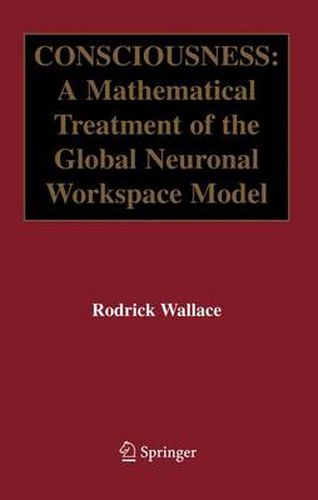Readings Newsletter
Become a Readings Member to make your shopping experience even easier.
Sign in or sign up for free!
You’re not far away from qualifying for FREE standard shipping within Australia
You’ve qualified for FREE standard shipping within Australia
The cart is loading…






This title is printed to order. This book may have been self-published. If so, we cannot guarantee the quality of the content. In the main most books will have gone through the editing process however some may not. We therefore suggest that you be aware of this before ordering this book. If in doubt check either the author or publisher’s details as we are unable to accept any returns unless they are faulty. Please contact us if you have any questions.
This book is not an intellectual history or popular summary of recent work on consciousness in humans. Bernard Baars (1988), Edelman and Tononi (2000), and many others, have written such, and done it well indeed. This book, rather, brings the powerful analytic machinery of communication theory to bear on the Global Neuronal Workspace (GNW) model of consciousness which Baars introduced, and does so in a formal mathematical manner. It is not the first such attempt. The philospher Fred Dretske (1981), indep- dent of Baars, long ago outlined how information theory might illuminate the understanding of mind. Adapting his approach on the necessary conditions for mental process, we apply a previously-developed information theory analysis of interacting cognitive biological and social modules to Baars’ GNW, which has become the principal candidate for a ‘standard model’ of consciousness. Invoking an obvious canonical homology with statistical physics, the method, when iterated in the spirit of the Hierarchical Linear Model of regression theory, generates a fluctuating dynamic threshold for consciousness which is similar to a tunable phase transition in a physical system. The phenomenon is, however, constrained to a manifold/atlas structure analogous to a retina; an adaptable Rate Distortion manifold, whose ‘topology’, in a large sense, reflects the hierarchy of embedding constraints acting on consciousness. This view greatly extends what Baars has characterized as ‘contexts.
$9.00 standard shipping within Australia
FREE standard shipping within Australia for orders over $100.00
Express & International shipping calculated at checkout
This title is printed to order. This book may have been self-published. If so, we cannot guarantee the quality of the content. In the main most books will have gone through the editing process however some may not. We therefore suggest that you be aware of this before ordering this book. If in doubt check either the author or publisher’s details as we are unable to accept any returns unless they are faulty. Please contact us if you have any questions.
This book is not an intellectual history or popular summary of recent work on consciousness in humans. Bernard Baars (1988), Edelman and Tononi (2000), and many others, have written such, and done it well indeed. This book, rather, brings the powerful analytic machinery of communication theory to bear on the Global Neuronal Workspace (GNW) model of consciousness which Baars introduced, and does so in a formal mathematical manner. It is not the first such attempt. The philospher Fred Dretske (1981), indep- dent of Baars, long ago outlined how information theory might illuminate the understanding of mind. Adapting his approach on the necessary conditions for mental process, we apply a previously-developed information theory analysis of interacting cognitive biological and social modules to Baars’ GNW, which has become the principal candidate for a ‘standard model’ of consciousness. Invoking an obvious canonical homology with statistical physics, the method, when iterated in the spirit of the Hierarchical Linear Model of regression theory, generates a fluctuating dynamic threshold for consciousness which is similar to a tunable phase transition in a physical system. The phenomenon is, however, constrained to a manifold/atlas structure analogous to a retina; an adaptable Rate Distortion manifold, whose ‘topology’, in a large sense, reflects the hierarchy of embedding constraints acting on consciousness. This view greatly extends what Baars has characterized as ‘contexts.